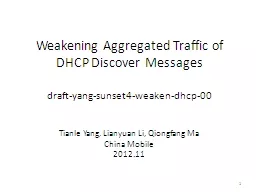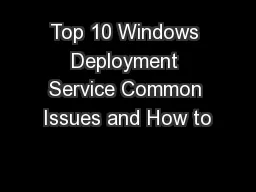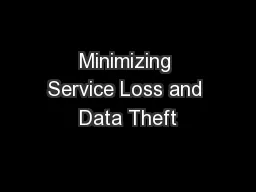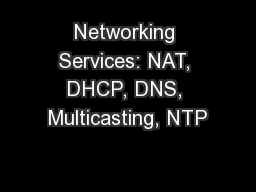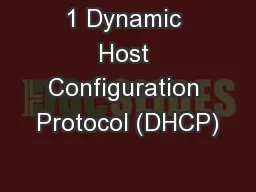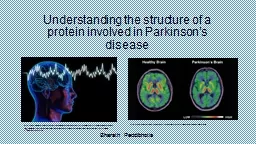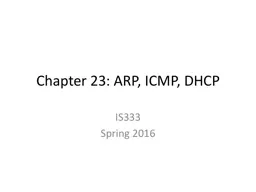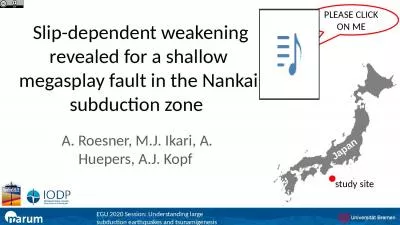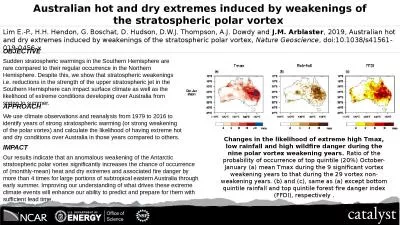PPT-Weakening Aggregated Traffic of DHCP Discover Messages
Author : phoebe-click | Published Date : 2015-09-23
draftyangsunset4weakendhcp00 Tianle Yang Lianyuan Li Qiongfang Ma China Mobile 201211 1 Problem Description1 All networks are changing from IPv4Only to DualStack
Presentation Embed Code
Download Presentation
Download Presentation The PPT/PDF document "Weakening Aggregated Traffic of DHCP Dis..." is the property of its rightful owner. Permission is granted to download and print the materials on this website for personal, non-commercial use only, and to display it on your personal computer provided you do not modify the materials and that you retain all copyright notices contained in the materials. By downloading content from our website, you accept the terms of this agreement.
Weakening Aggregated Traffic of DHCP Discover Messages: Transcript
Download Rules Of Document
"Weakening Aggregated Traffic of DHCP Discover Messages"The content belongs to its owner. You may download and print it for personal use, without modification, and keep all copyright notices. By downloading, you agree to these terms.
Related Documents

